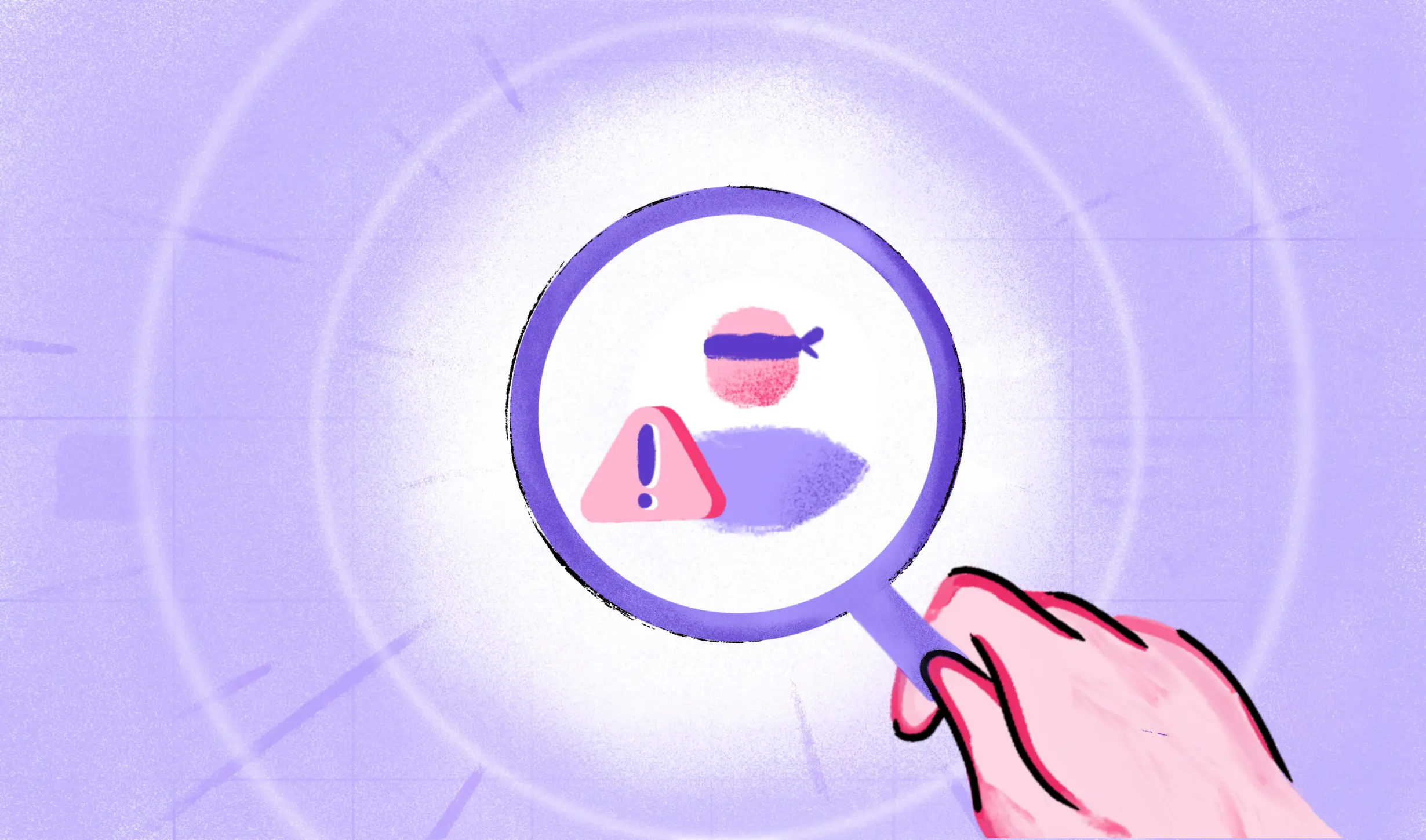Using AML & KYC To Combat Money Laundering
Regulators have gotten very particular about protecting the financial system from illegal activities and fraudulent users. The first step in implementing this guard wall in a corporate setup are the Know Your Customer (KYC) and Anti Money-Laundering (AML) frameworks.
AML is a crucial facet of mitigating financial risk and is also essential to combat money laundering; adhering to KYC norms becomes critical from a business point of view. Organisations that fail to comply with KYC and AML are fined for non-compliance, especially those working across multiple international jurisdictions. These fines could potentially run into millions of dollars and could be a reputation risk for businesses.
Therefore, KYC and AML make for an unputdownable aspect for financial institutions to sustain in today’s digital landscape. This article will see the scope of these technologies and how it helps.
What is Money Laundering?
In the simplest terms, money laundering is the process of covering up the source of money gotten from illegal activities. There are three stages in Money Laundering—Placement or bringing dirty money in the financial system, Layering or moving dirty money to hide its illegal origin, and Integration or dirty or laundered money becoming indistinguishable from clean money. Another similar crime is financing of terrorism. IMF classifies money laundering and financing of terrorism as financial crimes with economic effects.
What is AML?
The full form of AML is Anti-Money Laundering. The key agenda of AML is to prevent money obtained from illegal sources to be used in the financial system. Various countries have various AML regulations, most of them targeted at stopping criminal activities revolving around money laundering. In India, for example, AML regulation governing these activities is the Prevention of Money Laundering Act, 2002.
Under the KYC norms, Counter Terrorism Financing (CTF) and AML are two key tools to combat money laundering. CTF under KYC is an important way for the financial institution to safeguard its interests.
Challenges galore
As of now, companies are required to monitor and highlight suspicious money laundering cases. Like any other form of crime, money laundering is getting much more sophisticated. Moreover, the volume of such transactions has gone up drastically.
However, most companies’ current security systems are not sophisticated enough to identify legal and illegal transactions, especially bulk volumes. Criminals, therefore, can circumvent legacy systems by creating a complex chain of transactions, manipulating volumes, changing accounts, breaking transaction values, and many other ways.
Read more about structuring in money laundering here.
While one set of shortcomings of the legacy security systems is not flagging positive fraud cases, another problem is that of false positives—older systems log a lot of false alerts, which causes a waste of resources for the financial institutions.
Hence, to bypass this shortcoming, all the stakeholders, including the government, have been stressing the digitization of processes, especially the account opening process.
While digitization has dramatically increased consumer convenience and the spread of financial services to previously untapped sections, the burden of compliance has increased.
Compliance has become even more complex if it has to be done for international jurisdictions. Therefore, the need of the hour is to ensure that system efficiency, customer satisfaction, and business are protected from risk.
Digital KYC and AML
KYC has traditionally been an in-person activity. A typical customer would go to the branch or office, submit the physical ID and necessary details for verification and give confirmation wherever required.
Then, a whole gamut of back-office activities would follow to cross-check the submitted details against all the available information to provide or decline the necessary approvals.
In the digitally-enabled scenario, this process has become virtual. As a result, software programs have ensured that processes are simplified and response times are shortened.
For instance, some facilities for completing KYC are now made available through smartphones, using phone cameras. This is on the front end. Back-end processing has also made considerable progress, with Artificial Intelligence (AI) and Machine Learning (ML) deployed to handle bulk volumes and identify fraudulent users.
This is just the beginning, though. Risk mitigation and advanced fraud detection measures will ensure the entire gamut of grievous customer behavior is accounted for.
Nowadays, algorithms can help businesses analyze loads of information, make decisions, and learn from them—all of this with minimal human supervision.
Combating money laundering
In the battle against money laundering, it is not enough for financial institutions to be reactive. Rather, they’re required to take a proactive, strategic approach to reduce risk exposure and combat money laundering and other illegal activities.
Financial institutions need to take the following steps:
Step #1: Evaluate the existing process
Organisations must evaluate the as-is KYC/AML process from start to end. For example, the screening process must be robust from customer information collection and verification at onboarding. In addition, the process must identify links to anti-social elements (terrorist groups, criminals, etc.) or politically exposed persons (PEPs).
Step #2: Connecting customer information with KYC/AML data
Apart from the mandatory information collected, there are a lot of customer data points available to financial institutions. If these data points are linked with the KYC and AML data, many more critical behavioral patterns can emerge.
These patterns could be about investments, transactions, third parties, etc. While data scientists are currently involved in comprehending the raw data, it is not foolproof and efficient.
An exciting solution to this problem could be Machine Learning (ML). Once trained, ML has proven to be much more robust and accurate when figuring out patterns of fraudulent activities.
Moreover, the number of false alerts concerning such transactions is also lower via the ML route, making it more effective and helpful in conserving resources like time and money.
Step #3: Having recurring communication
Make sure there’s constant contact between financial institutions and law enforcement. There are always new ways people are working to circumvent the system. Regular meetings between financial institutions and law enforcement ensure both parties are up to date with the new techniques that are rising up.
Step #4: Use analytic techniques to find patterns
Data analytics allow institutions to find multi-factored patterns. Once these patterns are recognized, officials can develop client models and get alerts whenever a high-risk account enters the pipeline.
Step #5: Standardization of systems
With the disparity in the systems used by various banks, comes blockers of anti-fraud efforts. The best way to combat this issue would be to move to a completely digitalized system to facilitate clear communication between financial institutions.
Making a case for advanced technologies
The buck doesn’t just stop here. Progressive technologies can make your KYC and AML framework much more robust and error-proof. For example, as highlighted earlier, Machine Learning (ML) can be a potent tool in combating money laundering.
Instead of simple instructions, ML uses algorithms to analyze available information, make decisions, and improve further. As a result, ML is more equipped to identify hidden variables that characterize money laundering trails.
Blockchain is another emerging technology that can prove pivotal in combating money laundering. At the center of blockchain technology is a public distributed ledger that independently verifies transactions that are recorded.
Suffice to say, every transaction is therefore reliable and unalterable. Moreover, organizations can store customer data in the blockchain network, which they can easily access securely only after explicit permission from the customer.
Therefore, this monitored process would make information verification much smoother and more secure. Besides, financial institutions would be able to access the entire transaction history, preventing any scope of illegal activities from going unnoticed.
Key takeaways
A global financial architecture to combat money laundering is the need of the hour, significantly so, when countries’ interconnectedness and financial markets increase.
Financial institutions need to be extra vigilant when it comes to compliance. Legacy KYC and AML might fall short to combat money laundering in this hyper-changing world. Therefore, financial institutions need to leverage tech solutions’ expertise and specialized nature to boost KYC and AML.
Depending on tech would help the organizations focus on other business goals like customer acquisition and revenue generation, while leaving the transactional part of compliance to the specialist software programs.
These programs can also reduce compliance costs and make the overall process more effective if deployed correctly. This would also ensure that regulatory compliance is taken care of without fines or penalties.
Talk to us to know more!

 US
US
 IN
IN









